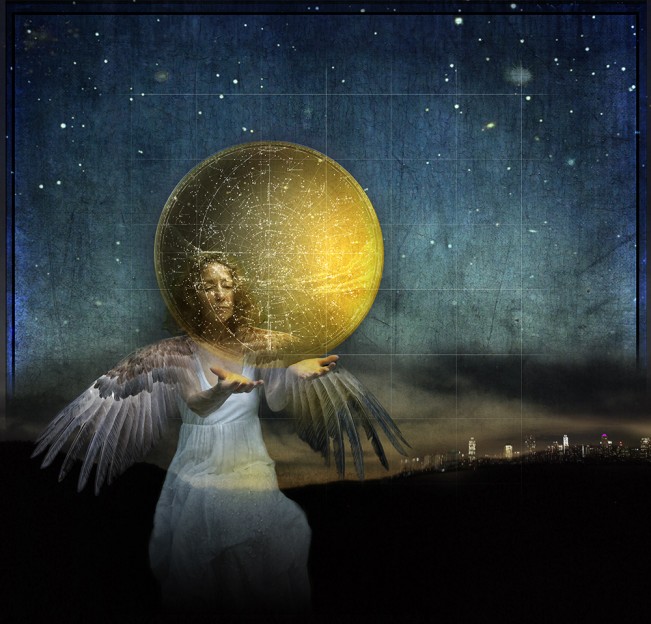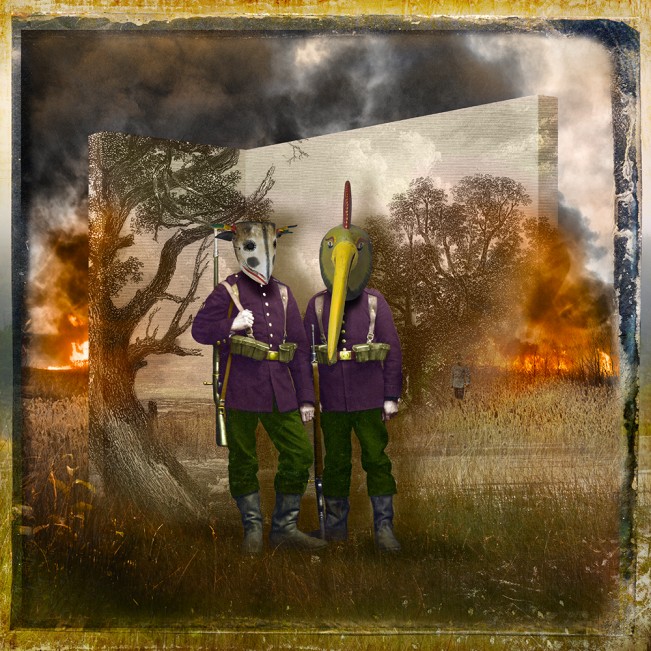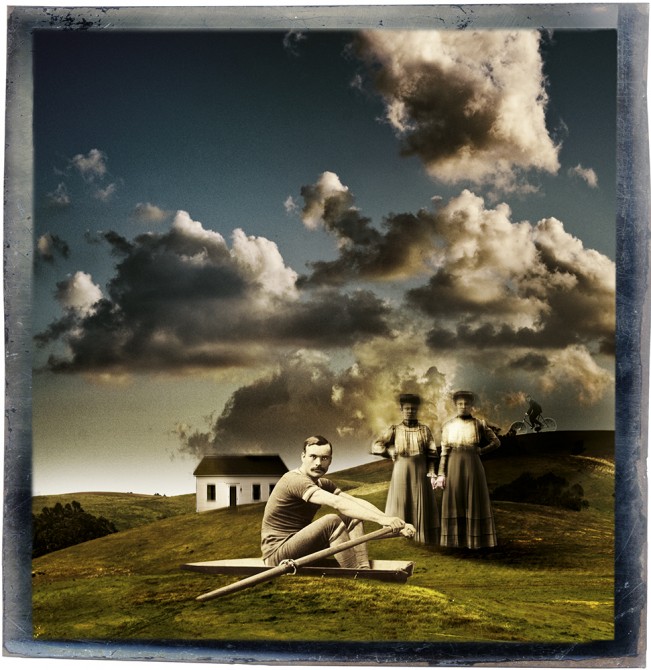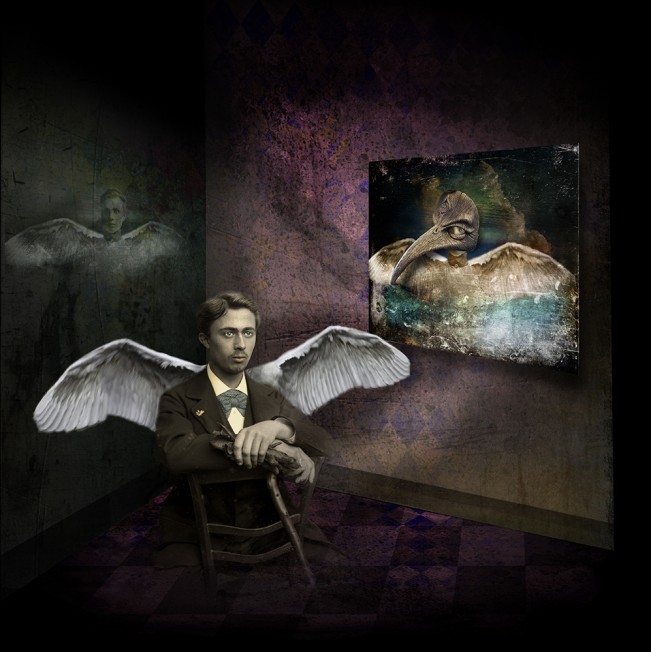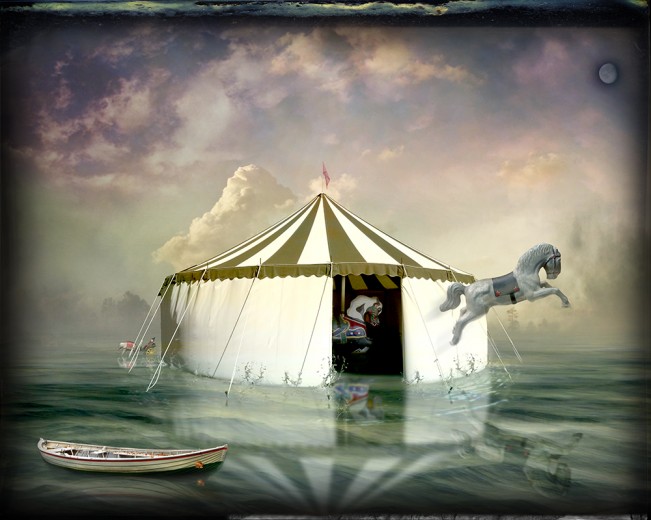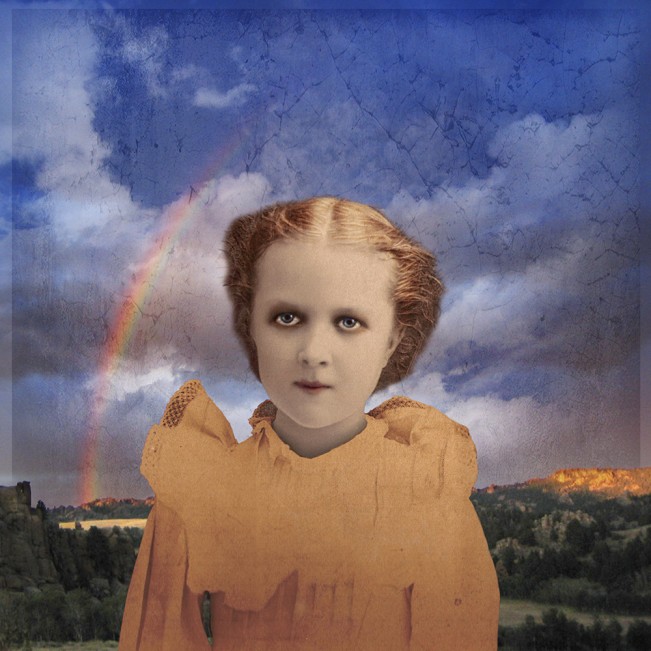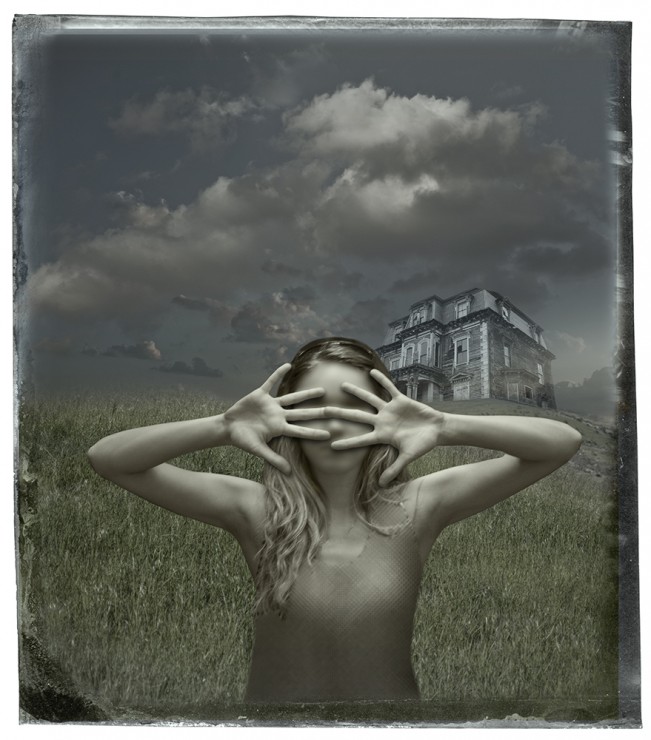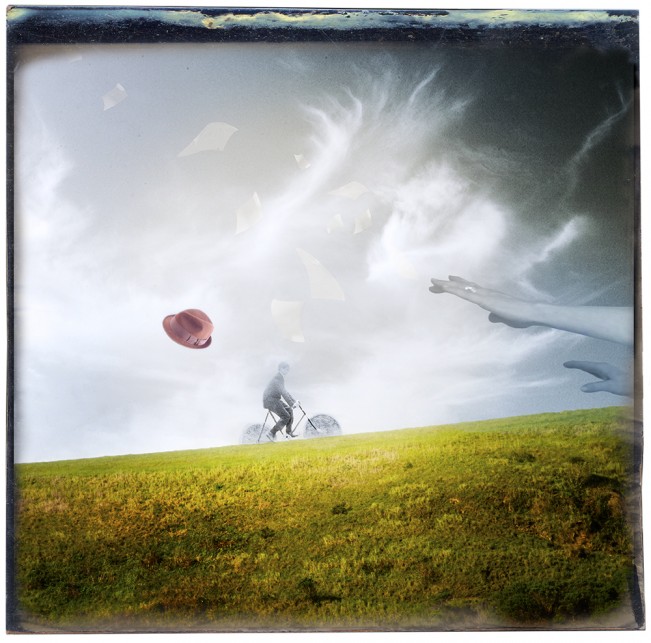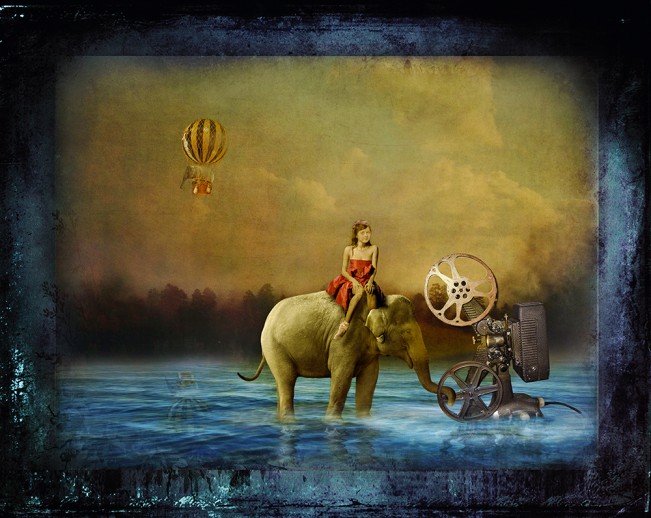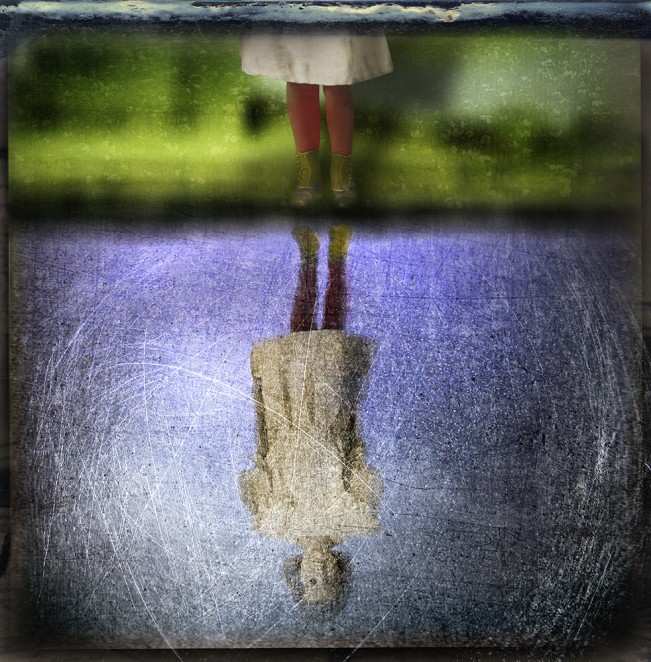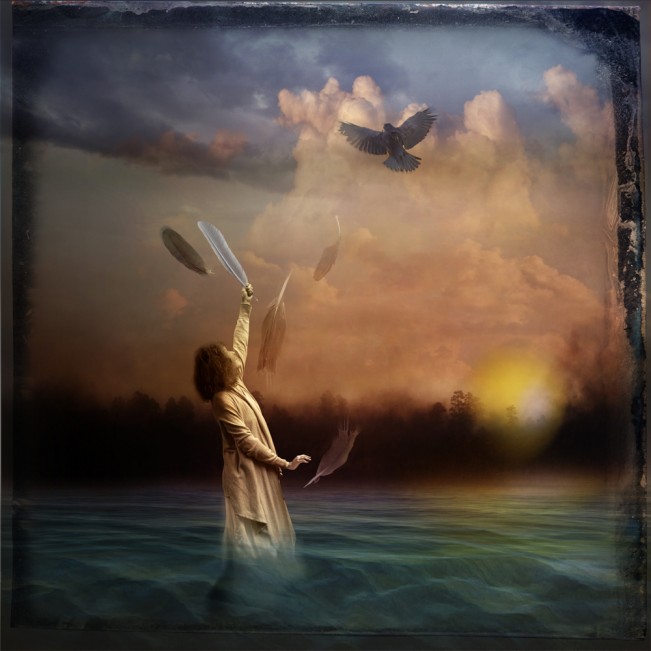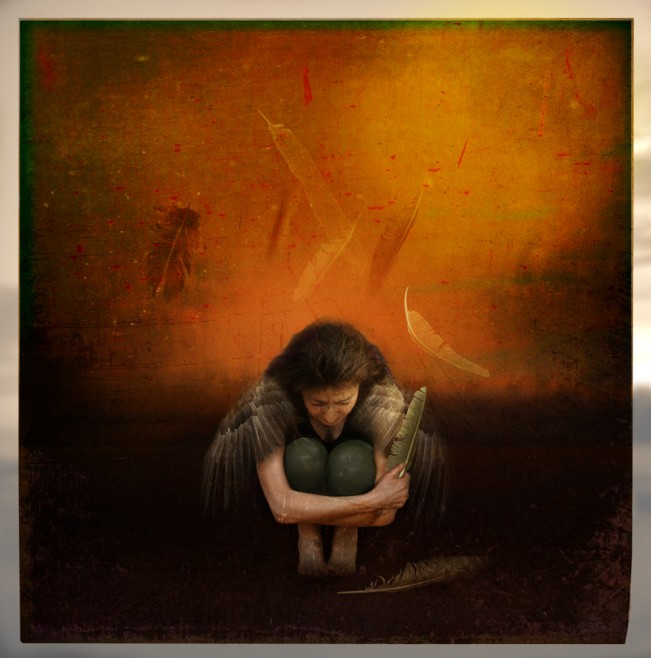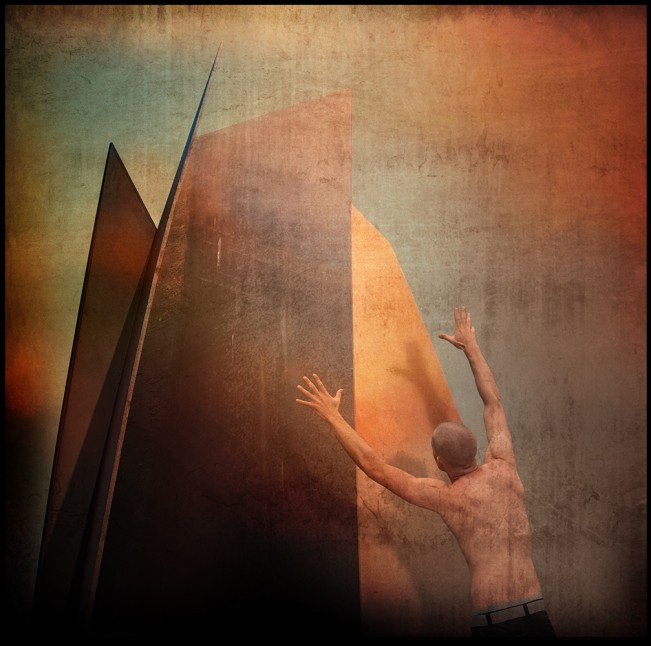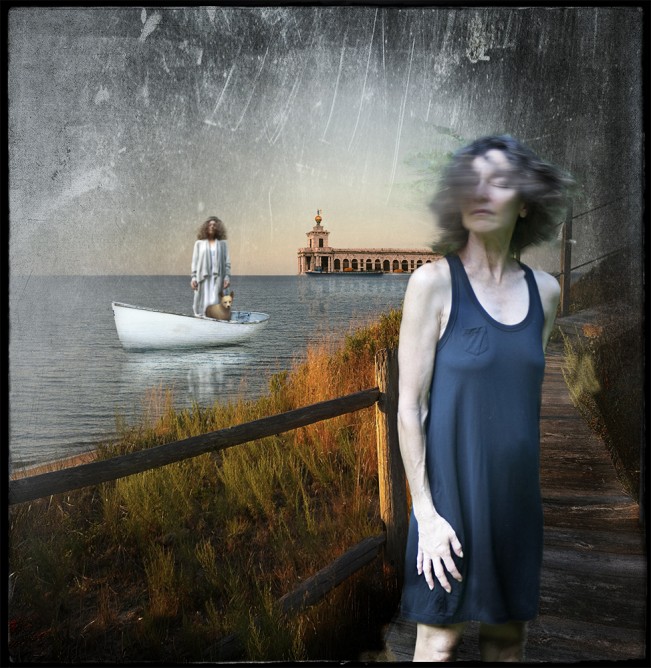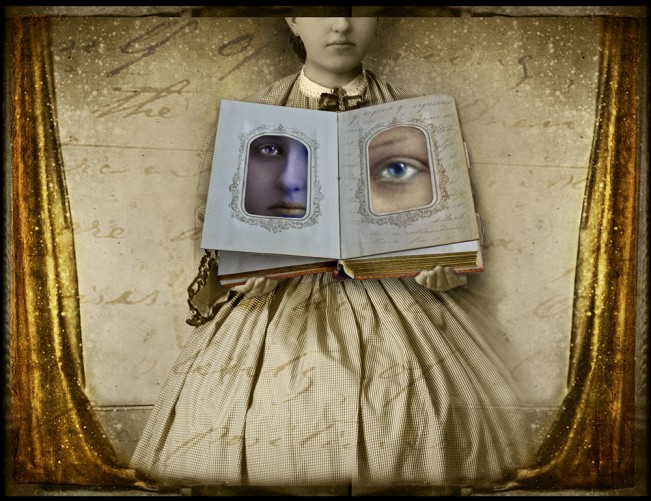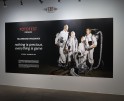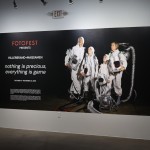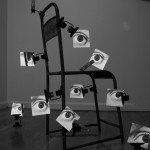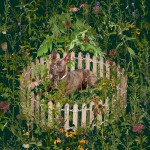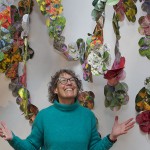The Fran Forman Interview: Assembling Magic
Photographic artist Fran Forman has been stirring the photography pot, creating a recipe for alchemical thinking and new ways of seeing the world . She comes to the task with all the right ingrediants having held a succession of positions in the fields of graphic design, book cover art and web design; in addition she studied art and sociology at Brandeis University, received an MSW in psychiatric social work, and then an MFA from Boston University. This sensitivity to the inner self and psychological thinking, plus her technical skill sets and a passion for surrealism, paradox, and illusion results in a process that allows her to assemble…magic.
Fran recently opened, Of Magic and Myth, along with Tami Bone, at the Photo Methode Gallery in Austin, Texas. The exhibition runs through October 31st and Fran will be lecturing on October 18th. The exhibition is a delightful combination of sensibilities–both photographers construct images, creating new worlds that explore the past and the future and dip into magical realms. Their visual narrations are at once whimsical, poignant and have meanings deeper than what’s on the surface.
Recently garnering 1st Prize in Fine Art Photography portfolio from the Julia Margaret Cameron awards, Fran is a Resident Scholar at the Women’s Studies Research Center at Brandeis and a recipient of several grants. She teaches digital collage at the School of the Museum of Fine Arts in Boston. Her work has been exhibited widely, both locally and internationally. She has won significant top prizes: the 2012 Px3 Prix de la Photographie (Gold, Silver, and First Prize in three different categories), where her work was on exhibit in Paris. In 2011, she was one of only thirty Americans invited to attend and exhibit at the 2nd Biennial International Photographic Cultural Festival and Exhibition, Lishui, China, and her work is currently on tour at multiple venues throughout China. Also in 2011, she won Second Prize (among over 8000 entries) from the Worldwide Photography Gala in the Portraits category. In 2010 and 2008, she won first place, second place, and an honorable mention at the International Photography Awards, and an Honorable Mention at the Julia Margaret Cameron awards. In 2010, 2008 and in 2007, she was a winner in PX3 Prix de la Photographie Paris, their People’s Choice award, and Adobe Photoworkshop.com. Her work appears in many journals, on-line blogs, several art books, and adorns the covers of many books.
She is represented by Pucker Gallery (Boston), AfterImage Gallery (Dallas), SusanSpiritus Gallery (Newport Beach, California), High Noon Art and Culture (Beijing), PatrickDaviesCA (London), and Photo Méthode (Austin, Texas).
Her work is in the permanent collections of the Smithsonian National Air and Space Museum (Washington, DC), where it is currently on exhibit, the Museum of Fine Arts, Houston, and Boston’s Museum’s of Fine Arts. Schiffer Books is publishing a compilation of her work. The book, Escape Artist, The Art of Fran Forman, will be available in autumn 2014.
Congratulations on the exhibition! Are you showing new work?
At PhotoMéthode, I’m only exhibiting fifteen pieces, six of which were completed in the last two years. The work I’ve been experimenting with recently is quite different and not ready for prime time.
How wonderful that your work is on exhibition at the Smithsonian Art and Space Museum through the end of the year!
Yes, I’m thrilled that six of my prints are in the permanent collection of the Smithsonian! They are on view through 2013 in their exhibition of recent acquisitions: High Art: A Decade of Collecting. As a child in Baltimore, where I grew up, the Air and Space Museum was one of my favorite places to visit. I remember being enthralled with the underbelly of Lindbergh’s plane hanging from the ceiling. So seeing my images not far from “The Spirit of St. Louis” is indeed a thrill.
How did the exhibition come about?
This is such a cool time to be making art, as it truly has a global reach. Art introduces us to new people and communities, and takes us in new directions – emotional, spiritual, as well as geographic. So while I was in China with you, Aline, exhibiting our work at the International Photo Festival in Lishui in 2011, I became friends with the brilliant and talented Carolyn Russo, another photographer and a curator at SNASM. She was intrigued with my surreal images depicting fantasies of flight and she proposed that the Museum acquire some of my prints. She was definitely thinking out of the box; the Museum of course has an enormous collection of art and artifacts relating to air and space travel, but few – if any – images suggesting the human desire to fly, the universal longing for freedom or release, the dreams that suggest that the impossible is possible.
I’m curious to learn about your childhood as your images are often about children, play, or whimsy. Did you have an active imagination? I can imagine that you loved all the imagery that accompanied children’s books…
Oddly enough, I don’t recall picture books in my childhood home, but I looked forward to the arrival each week of Life and Look magazines. Since I drew pictures obsessively, I poured over the photos in those magazines. (I was always drawing and doodling rather than reading my school books, much to my teachers’ dismay.) But that ‘source material’ from Life and Look was undoubtedly my first education in powerful imagery and composition.
My parents didn’t read to me, but my grandmother told wonderful and crazy stories about sky-hooks and people flying. She must have heard these stories from her immigrant parents, and they’ve worked their way into my image-making.
But it was my daughters’ playful extravagant imaginations, their funny and spirited conversations, their artwork and the structures they designed and built for themselves out of the oddest material – they have had the biggest effect on my art. I only wish I had a fraction of their imagination and talents.
You have an MFA in Graphic Design and Photography—what a perfect marriage for your work! As someone who used Photoshop practically since it’s incarnation in the early 90’s, how has the technology changed and benefited what your create?
I had been drawing, using photographs and making collages, while working as a designer and as a mom. I wasn’t interested in computers until the late 80s, when I learned to draw pictures on it and began scanning old photos and experimenting with designs. The technology was primitive, my first scanner cost about $1000, my first computer had a 9” monitor and no color, and printing was virtually impossible (and if you could print your images, they faded rapidly). In 1992, I used the first version of Painter which had two layers (RIF format) and I’d copy each layer into separate Photoshop files. It was possible to do essentially what you can do today, but it was incredibly laborious and tedious, and you had scores of ‘save as’ documents. I don’t remember if there was even ‘anti-aliasing’ available, so I learned to work with the jaggies. Nevertheless, I felt liberated and ecstatic by the possibilities, and I made animations with sound as well as photo montages.
I was lucky because I ‘grew up’ with Photoshop, and once layers were introduced, I found I could be more prolific. With Photoshop, I essentially continued doing what I’d already been doing – combing old photos with my drawings, and this tool became a substitute for scissors, glue and paper.
The biggest differences between those early versions of Photoshop and current versions are: speed; file size; bells and whistles, but there’s a down-side: because you can create just about any kind of image in Photoshop there’s a tendency to do too much. I’m been guilty of this, too. I often have to go back into an image and take out elements that I’d spent hours or days massaging. Some people still assume that creating an image using Photoshop as a painting tool means pushing a few buttons. But like learning any new tool, it requires years of practice and incredible patience.
I was also fortunate to have had a general background in art. My many years as a graphic designer taught me about visual communication, how to suggest an idea without the extraneous stuff, and how to think about composition, texture, color, harmony, scale, symmetry, and of course metaphor and message. I especially love typography, as font and logo design forces you to think about positive and negative space, and how to use simple letter-forms to suggest meanings. And from typography, I’ve learned the value of metaphor and that every pixel counts.
When did you develop your signature style and what brought your process?
I inherited a treasure trove of old family photos after my mother’s death in the late 80s, and since it coincided with my learning to use the computer for image-making, I combined elements of those photos with current photos of my kids. I missed my mom, of course, and found comfort in seeing her on my computer screen, and I wanted my young daughters to keep her memory alive, too. I was particularly interested in finding physical resemblances that crossed six generations, and my earliest collages combined faces from the mid-19th to the late 20th centuries (in fact, one of my daughters has the same eyes as my great-grandmother!).
Early in the 90s, I was hired to create all the design and artwork for a massive and visually rich CDrom about Jack Kerouac and his literary circle; it incorporated one of his novels, art galleries, animations, timeline, archive, and more. Having access to archival material and supplementing those fabulous photos with my own photos, and creating imagery that explored the life of the Beats and Buddhism, travel and loneliness, literature and drunkenness, was an incredible opportunity. The project took two years, and I was soon being recruited to create montage, photo illustration, and multi-media for other clients and eventually for AOL Time Warner.
Can you tell us a little bit about how you construct your images?
Each image is an independent narrative, and I invite the viewer to construct his or her own story around it. I like to think of the image as an individual frame in a dream or a movie, time blurred, or the moment in-between.
My process begins with a photo I’ve shot or scanned: perhaps an interesting face or a landscape, and I begin by silhouetting those elements. I’ll often dip into my large inventory of images or I’ll wander around with my camera until I find the perfect object or artifact to work with the new image.
Despite having a general idea as to where I want to go, I often get lost in the process of ‘doing’ and lose my sense of direction. Someone said it’s like ‘being in the zone’. I work on an image for days at a time, sometimes weeks, and I often put it away and re-use parts of it later. I’m constantly cannibalizing old work. I’m always looking for relationships rather than arbitrary elements, although this may not always be obvious to the viewer. The process is intuitive, which is my style, but often pulls me down the wrong path. And I experiment endlessly: what would happen if you place this object there? Over that object? Invert it? Turn it upside down? Change opacity? It’s the experimenting that takes the most time, but it’s by far the most fun. I welcome the surprise and the serendipity of the process.
You’ve had a lot of success in the past couple of years, care to share any insights to emerging photographers?
Success is relative and subjective. There’s also alot of luck involved. But as for insights: work each day, shoot pictures, draw and paint, look at other art, listen to music, read books, organize your image archives, edit your work, visit museums, meet other artists. Show your work to everyone you can, and take the criticism without complaint (I know, it’s hard). Don’t be dismayed by all the rejections you’ll get; Stephen King used to pin up his rejection notices on his wall until he had no space left! And don’t define success by sales! Do it because you love it. Just as I drew pictures endlessly in the margins of my school textbooks, I would continue to make pictures even if no one saw them. I just love the act of doing, and I’m so lucky that other people want to look at them.
What would you change about your journey?
I would like my journey to extend many more decades. Alas…
Is there something about you that we would be surprised by?
-I love most all music and I always listen to it while I’m working.
-I love to dance but I’m a terrible dancer. And I took piano lessons for five years and still can’t read a musical note or play an instrument.
-I hate math and can’t do simple arithmetic.
-I love to read and I love movies and good TV.
-I adore all animals – except slugs, mosquitoes and ticks. I’m a member of PETA.
-I have a book coming out next fall! Stay tuned.
And finally, would be your perfect day?
-No snow.
-The computer behaves itself.
-My kids are happy.
-Lunch with a friend.
-Getting into the zone with an image I’m enjoying working on.
-Finishing my book.
Posts on Lenscratch may not be reproduced without the permission of the Lenscratch staff and the photographer.
Recommended
-
Ricardo Miguel Hernández: When the memory turns to dust and Beyond PainNovember 28th, 2025
-
Pamela Landau Connolly: Columbus DriveNovember 26th, 2025
-
Interview with Maja Daniels: Gertrud, Natural Phenomena, and Alternative TimelinesNovember 16th, 2025
-
Robert Rauschenberg at Gemini G.E.LOctober 18th, 2025
-
Hillerbrand+Magsamen: nothing is precious, everything is gameOctober 12th, 2025

